Transparency International’s latest Index of Public Services Corruption
Transparency International released the latest version of their annual Corruption Perceptions Index (CPI) Perhaps you were hoping that the situation regarding corruption in Zimbabwe’s public services might have improved, but unfortunately their 2023 index shows that in the 180 countries and territories where they conducted surveys many have in fact got worse and the situation in Zimbabwe is unchanged and best summed up in one word…dire
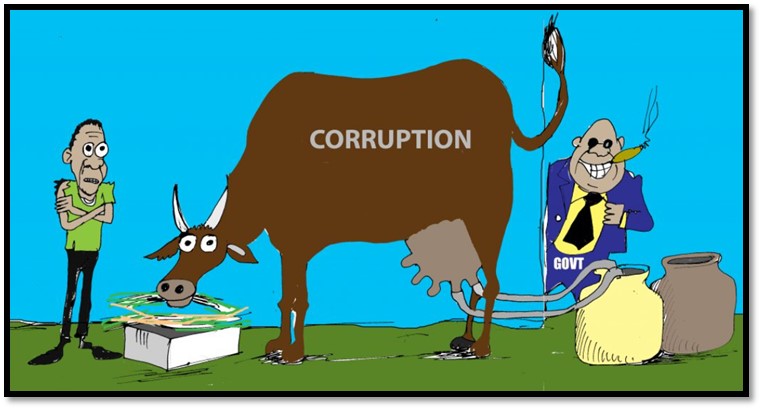
Image credit: newzimbabwe.com
How corrupt are the public services of countries around Zimbabwe?
On a measure of 0-100 where 100 measures no corruption, 123 (i.e. 68%) out of the 180 countries where public perceptions of public services were surveyed had a score of 50 or less. According to Transparency International things are looking pretty bad with scores getting lower as corruption thrives in countries with weak judicial systems and where bribery and abuse of power are tolerated by authoritarian governments. The global average is jammed at only 43 and most countries world-wide have made no progress or declined in the last decade – this is a very disappointing result.
Amongst Zimbabwe’s neighbours just Botswana and Namibia manage to get above a score of 50 with Botswana topping the list as judged the least country with the least corrupt public service. Most others manage to keep their positions relative to previous scores although there are some improvements (Angola and Malawi) whilst others have slipped down the rankings (Lesotho and Kenya)
Zimbabwe retains its position at third last in the group; with only Congo and the DRC being perceived as being more corrupt. This is a poor state of affairs that reflects that the ZANU-PF government ranks as one where corruption is the norm; where ordinary citizens struggle to access justice and where the ruling elite backed by the security apparatus of the state act with impunity at the expense of the common good of society.
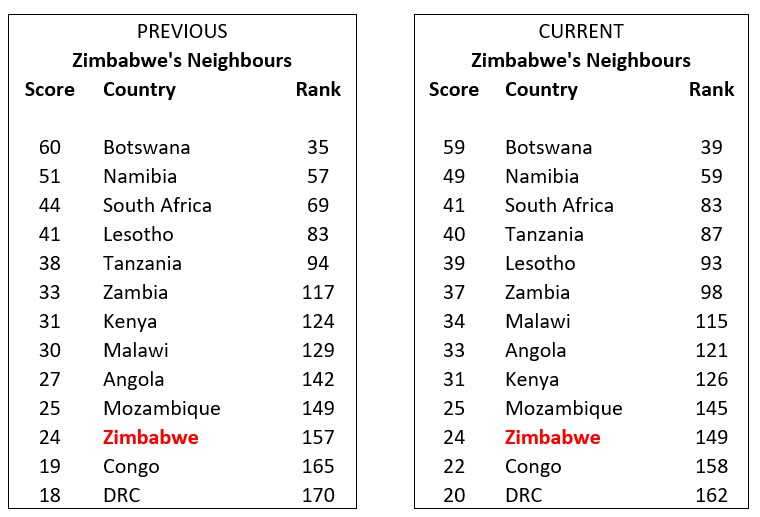
Source: Transparency International
In Zimbabwe most citizens know that their government and civil service, dominated and controlled by the ruling ZANU-PF party, acts as a criminal organisation knowing that whatever it does will go unpunished as the justice system lacks the independence, resources or transparency to provide any checks and balances on the actions of the country’s leaders.
Since November 2017 when Robert Mugabe was removed as Zimbabwe’s president and party leader of ZANU–PF and replaced by Emmerson Mnangagwa the corruption index has improved marginally. But from a low 20/100 in 2012, the latest score of 24/100 in 2023 is nothing to boast about.
 Source: Transparency International
Source: Transparency International
Zimbabwe’s ranking in the CPI is 149th out of 180 countries indicating that the country has very serious corruption problems with its public services. Transparency International believe that weakening justice systems are reducing accountability for public officials, civil servants and politicians and this is allowing public sector corruption to flourish in countries like Zimbabwe.
For the gilded Zimbabwean elites and ZANU-PF there is increasing evidence that they are practically immune from prosecution. What did we learn from Al-Jazeera’s video documentary Gold Mafia Zimbabwe? We learnt that millions of dollars’ worth of gold are being illegally smuggled from Zimbabwe annually with the connivance of the authorities such as the Reserve bank of Zimbabwe (RBZ) and Fidelity Printers and Refiners (FPR) for the benefit of politically well-connected persons to the ZANU-PF party and the presidency to facilitate their money-laundering activities.
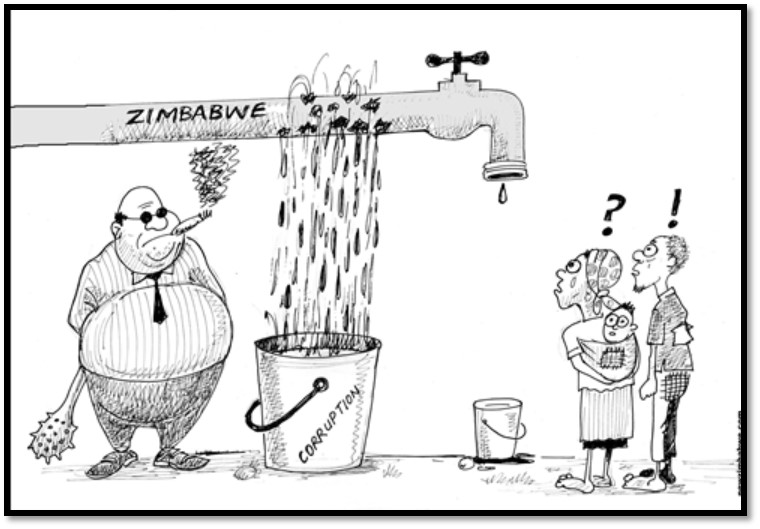
Image credit: newzimbabwe.com
With the connivance of such patrons there is virtually no chance that any of the players named in the above documentary will face justice for corruption and breaking the country’s laws in regards to money laundering. Too many high public officers in the civil service, military and other establishments are involved and benefiting and thereby removing any legal consequences for those named individuals. Having been publicly named they may go quiet for a few months and keep a low profile, but that is the limit as the whole Zimbabwe justice system has become corrupted for the powerful.
The situation worldwide on public corruption according to Transparency International
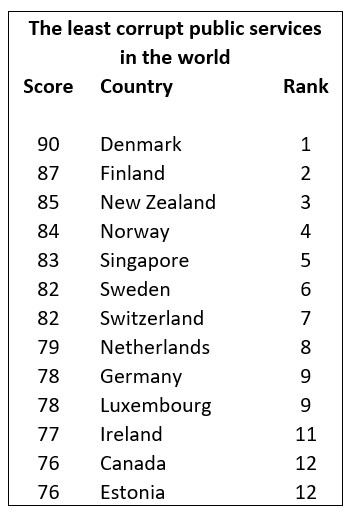
Source: Transparency International
Transparency International noted, “Western Europe and the European Union remains the top-scoring region, although the regional average score dropped to 65/100 as checks and balances weaken and political integrity erodes. Despite improvement in some countries, Sub-Saharan Africa maintains the lowest average at 33, with democracy and the rule of law under pressure.
The rest of the world remains stagnant with all other regions having averages under 50. Eastern Europe and Central Asia grapples with the dysfunctional rule of law, rising authoritarianism and systemic corruption.
The Middle East and North Africa shows little improvement, reflecting ongoing struggles with political corruption and conflict, and Asia Pacific shows long-term stagnation, although some countries historically at the top are backsliding. Finally, lack of judicial independence and weak rule of law are enabling widespread impunity in the Americas.”
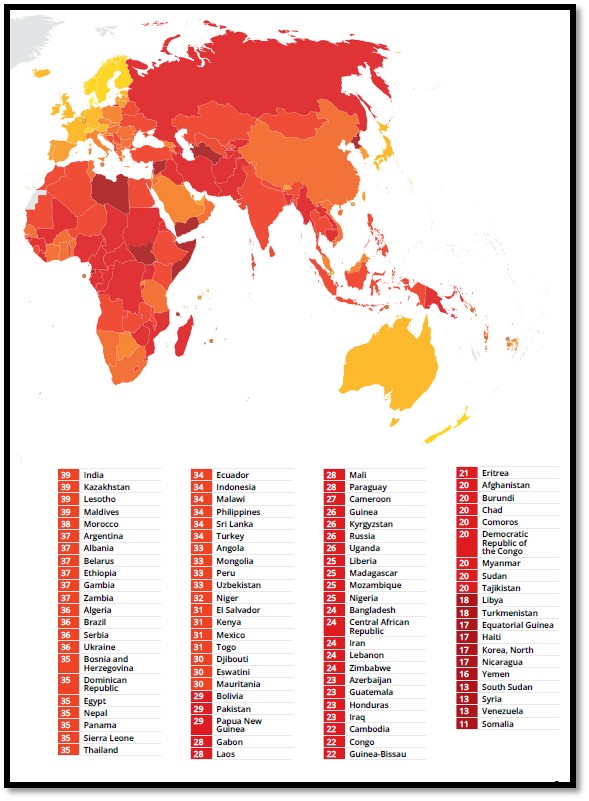
The above map of Africa, Europe and Asia highlights the level of public corruption in colour. Yellow is the least corrupt with increasing levels of public corruption going to orange, then red, then deep red as the countries with the worst levels of corruption.
Reference
Transparency International <newsletter@transparency.org>
